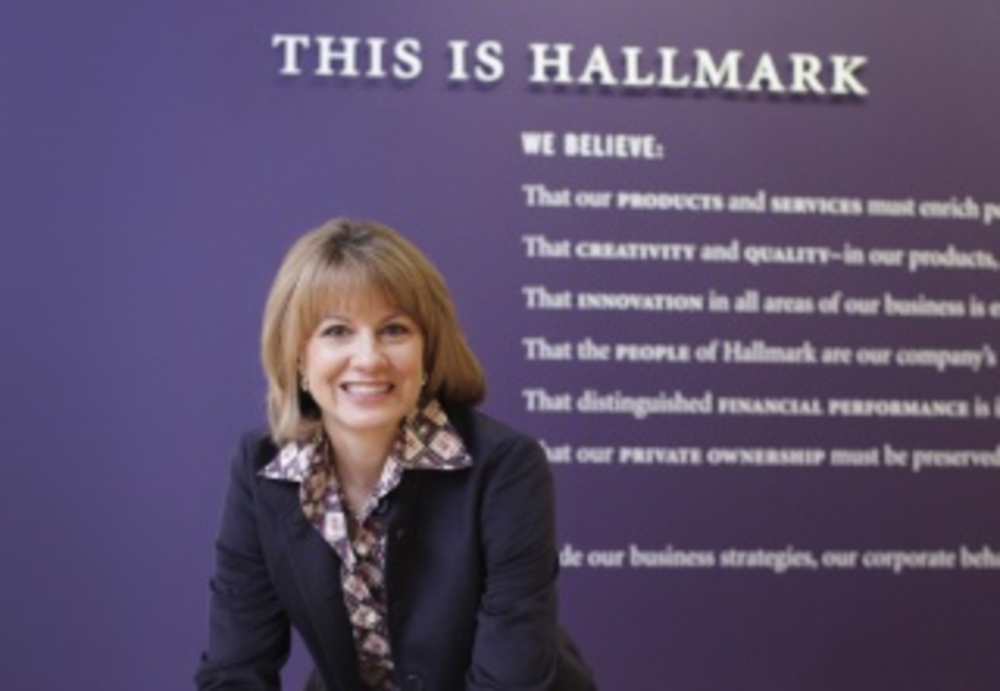Last year should have been one nonstop celebration for Hallmark Cards and its marketing chief Lisa Macpherson. The Kansas City, Mo.-based purveyor of greeting cards and other products turned 100, and Macpherson, after about nine years at the company, had recently been promoted to the top marketing job. But for Hallmark, a company that has helped generations of consumers mark happy occasion after happy occasion, and for Macpherson, a marketer who had worked her entire career to reach the pole marketing position of a major brand, there would be little cause to party. ?
Hallmark’s revenue, like that of so many other companies, began to decline in the past three years. In 2007, Hallmark generated $4.4 billion; by 2009, that number fell to $4 billion. The company cut more than 1,000 jobs. In a statement at the time, president and CEO Donald Hall, Jr. described 2009 as one of the most challenging years in the brand’s history. ?
Hallmark’s leadership, it was clear, had to rethink the way it did business. In October 2009, it tapped Macpherson to lead a 250-employee marketing department, also appointing a president of retail, a senior executive of customer development for mass channel partners and a digital chief. The company, Macpherson says, also expanded its product line to “meet a broader spectrum of needs” and widen its focus beyond just the holidays to include “the little moments that occur every day.”?
Instead of putting the focus on products — the greeting cards, ornaments and paper party plates that made Hallmark famous — the company began to “put the idea first and the format second,” Macpherson says. With this in mind, it launched innovative products like the Recordable Storybook, allowing parents to record their voices in their children’s books so they can “read” to their kids even when they’re not around.?
The Highlights
Hallmark’s multichannel approach
“We are working on optimizing our email
communications so that our customers
can view them easily on mobile or tablet,”
Macpherson says. “We still use snail mail
in some cases, but we are migrating more
to email and mobile.”
Direct Mail
“We send out folded mailers for each
season,” Macpherson says. “We also
do a catalog in the fourth quarter for
our ornaments products. The folded
mailers are an open-up tabloid format
[as opposed to] a stapled booklet.”
Loyalty Marketing
Hallmark’s direct marketing efforts are
targeted mainly at its 13 million Crown
Rewards members. “We have such an active
loyalty program that we tend to use it to
reach our most loyal customers with offers,”
Macpherson says.
The company decided to take an entirely new approach to marketing, one that shelved seasonal- and holiday-?focused taglines in favor of a more evergreen brand message. Previously, Hallmark would run from four to seven different messages throughout the year. With the “Life is a Special Occasion” campaign, launched this past February, it introduced a single theme, representing the brand across all customer communications.?
“As powerful and as beloved as our brand is, it played a narrow role in consumers’ lives. It was a brand consumers thought of for special occasions,” Macpherson says. “As a result, we only played a role in your life three, four or five times a year.”?
Leo Burnett Worldwide has been Hallmark’s AOR for the last 22 years, handling TV, radio and paid digital. The company works with Starcom MediaVest Group on media, Fleishman-Hillard on public relations, and Carlson Marketing on database management and its loyalty program, Crown Rewards. All print, direct mail, email and creative are handled in-house. ?
Macpherson says the loyalty program is the most effective marketing channel for Hallmark because it targets an already enthusiastic audience. The database boasts more than 13 million customers, including 8 million active members who are contacted through mobile apps, email and direct mail catalogs. “These are brand loyalists and we know that they want to hear from us,” she says. ?
Crown Rewards is used primarily to drive traffic to Hallmark’s Gold Crown stores, which number 3,000 (the company counts more than 40,000 retail outlets in all). One of Hallmark’s latest offers to Crown Rewards members is a 25% discount on personalized cards, party plates and e-card subscriptions. ?
An ever-increasing need to understand and fulfill consumer preferences is the single greatest change Macpherson has seen in the industry since she began her career at Fisher-Price in 1987. Then, it was “the retailer era,” she says, when big box retailers like Wal-Mart and Toys “R” Us emerged. It also was a time when point-of-sale data grew in influence. However, with the advent of digital communications, the industry has entered what Macpherson dubs “the age of the consumer,” where “he or she has complete transparent information, endless choice, and tremendous fragmentation in delivery and distribution options.”?
The company rebounded modestly in 2010, generating $4.1 billion versus the $4 billion of 2009. But the real test for Macpherson and the Hallmark brand is 2011, which has brought new product offerings as well as the rollout of the “Life is a Special Occasion” campaign.?
Macpherson, who also worked for The Timberland Co., says she’s been fortunate to have worked for companies founded by and, in some cases, still run by families. The family orientation of her employers has caused her to feel as if she is serving a loftier purpose than simply selling products. ?
“Hallmark is genuinely committed to enriching people’s lives by creating meaningful connections between people,” she explains. “How great a mission is that to be a part of? And that goal doesn’t come from a mission statement, but from the Hall family,” which founded Hallmark. ?
As for her own family, Macpherson has a 19-year-old daughter, a student at Brown University studying modern media and culture. When asked if that major seemed like the perfect fit for someone looking to follow her mother’s footsteps at a family-run company, Macpherson responds, with a hint of optimism, “We’ll see.”








